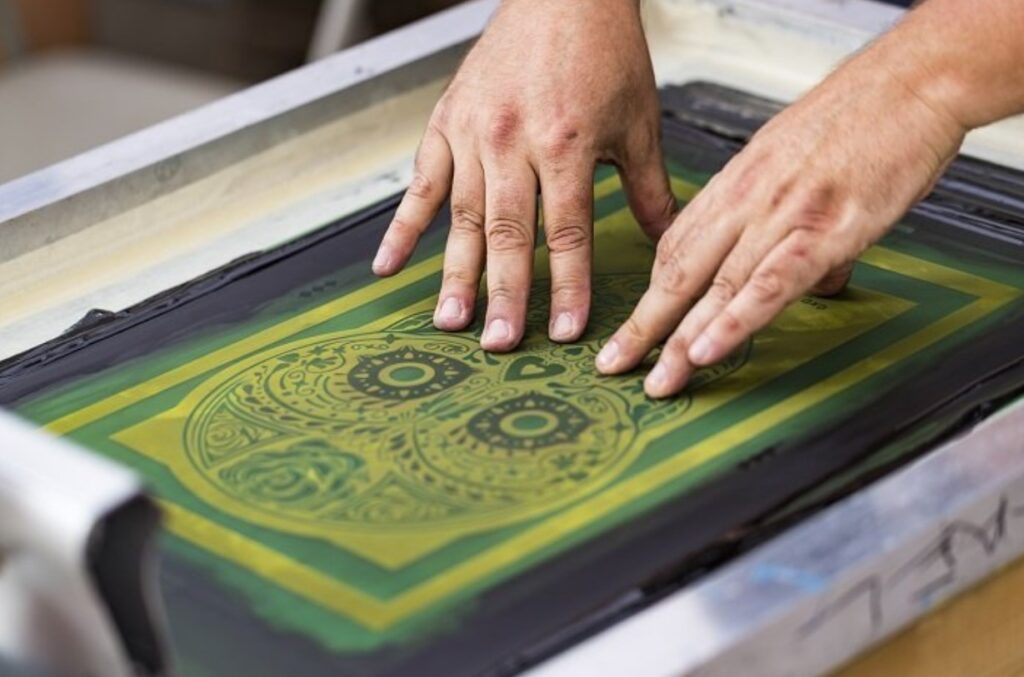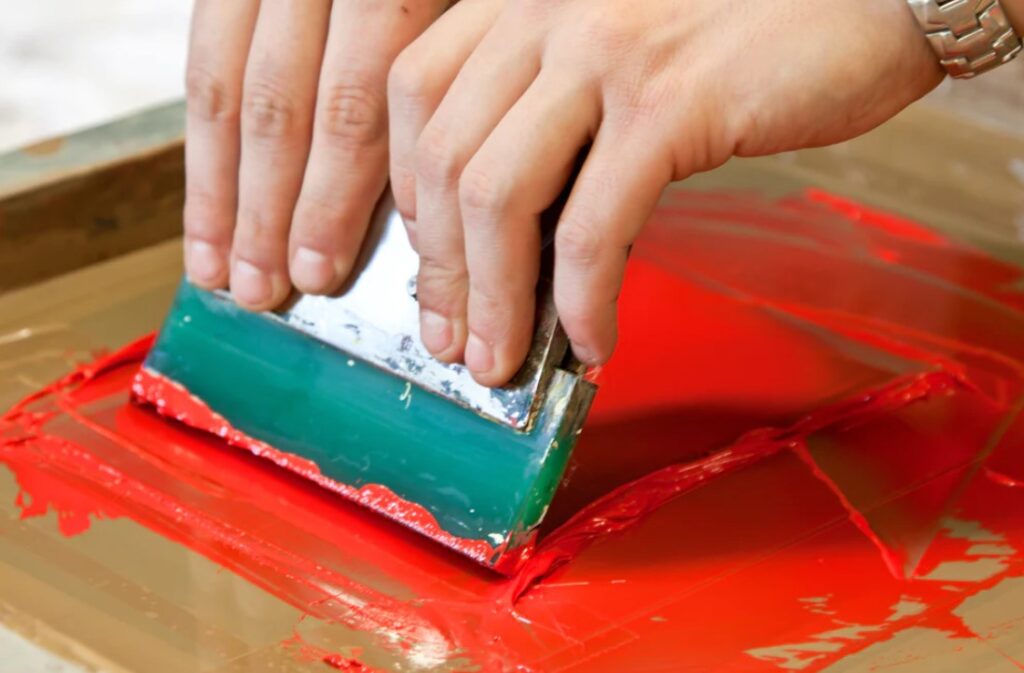Screen printing is a great way to add color and detail to your clothing or home decor. The process involves printing designs onto fabric, paper, or other materials, and has been around for thousands of years. In fact, some of the first screens were used for painting pottery. It’s an ancient craft that involves using printers with special stencils to print text onto fabric.
The process of screen printing has evolved since then, and now it involves the use of stencils in order to create an image on a surface, typically used to design on fabrics and other materials. This process is widely used to create logos and other text on t-shirts, jackets, and other clothing. This article illustrates the basics of screen printing that all beginners should know.
What is Screen Printing?
Screen printing is a method of printing on fabric using a stencil made of fine mesh that can be cut out by hand or with a squeegee. The image is then placed onto the mesh and transferred onto the material, such as cotton or cellulose acetate. However, there are different methods used in screen printing today.
The most common being sublimation and reverse sublimation. Sublimation is a process where the ink is printed directly onto the fabric without using heat. Reverse sublimation can be used for creating permanent prints on fabrics in both apparel and home decor products. It works by melting the ink onto the fabric in a very specific way so that it can then be absorbed into the fabric over time.
Screen printing also requires different types of supplies that can enhance the aesthetics of your work. Head on to this website to shop from a wide range of best-quality silk screen printing supplies available at budget-friendly prices.
There are several steps involved in screen printing

1. Preparing your canvas
To begin with, you might want to prepare your canvas as well as any other equipment that you require for this process. Make sure you have all the equipment including screen printing, inks and colors, squeegee, etc.
These materials are essential to enhance the beauty and design of the printing. Once you are ready with everything you can move on to the next step.
2. Placing your design on top of your canvas
The next step is to place the design on top of the canvas. Make sure the design is properly adjusted or else you won’t get the perfect design. You can get any type of design you want on your canvas. If possible, get a transparent screen, so you can hide the canvas from UV light and enhance the quality of your print.
3. Using a squeegee to apply ink to your design

Now it’s time to apply ink to your design. You might want to be extra careful when doing this step, so you can apply the ink properly on the canvas. Cover the entire design with ink and make sure no empty spaces are left. You can use a squeegee to properly coat the design with ink.
4. Removing excess ink from your design
Once you are done coating the design, now you can remove the excess ink, so there is no wastage. Make sure you don’t spill ink anywhere else on the canvas or else it will ruin your print, so be extra careful when removing the excess ink from your design. Once it’s done let it dry for 10-15 minutes.
5. Washing and drying the finished product
Now, you can wash the finished product to remove the excess emulsion. The ink used in screen printing is waterproof, so you don’t have to worry about the print. It will look good and new even after the wash. Once it’s donee make sure the print looks smooth and if it requires another coating of ink. If it does, then keep repeating steps as many times as necessary until you have achieved the desired effect. It depends on the type of fabric you are using and the quality of the ink.
Things all beginners should know about the basics of screen printing

There are different types of screens available for screen printing. These include metal screens, silkscreens and polyester meshes. The type of screen you use will depend on several factors including how large your design needs to be, how much detail you want in your design and what materials you want to print on.
If you are working with fabric, there are a few different ways you can print on different types of fabrics. If your fabric isn’t very thick but still has a patterned surface like cotton or gauze, then you will probably want to use a heat press so that you don’t have any wrinkles. This means they can be used on thinner fabrics like cotton without damaging them.
The most common printing method is solvent transfer printing (STP), which uses solvents such as water-based inks or latex paints as well as an adhesive medium such as water-based glue. There are also other methods such as thermal transfer printing where heat from an iron plate is used to transfer ink onto fabric but this can only be done with certain types of papers that have been prepped with special chemicals first before application starts.
Decide on whether or not you want to do screen printing or digital printing. Screen printing is more expensive but gives you a cleaner print and is generally used for large-scale projects like t-shirts and banners. Digital printing is much less expensive and gives you a lighter image of your product, but it also means there are no physical materials involved in production.
The Bottom-line
Screen printing is a popular way to print designs on fabric or other materials. It’s a great option for beginners since it’s simple to learn and easy to use. These were a few things that you should know about the basics of screen printing. If you want to add your personal touch to the quality of your clothing, then this process might be for you.

